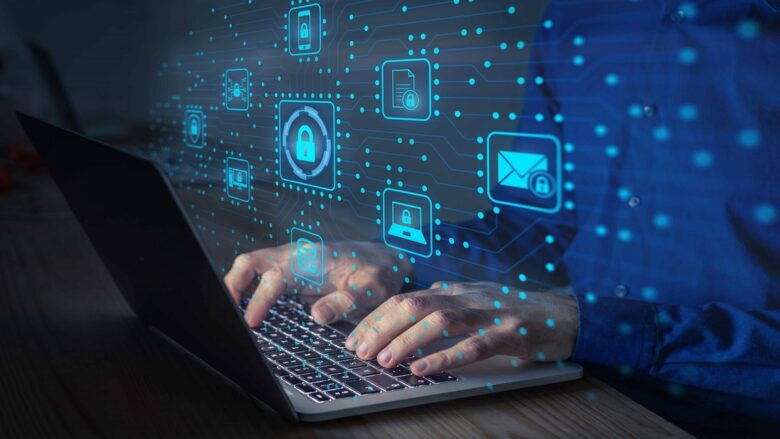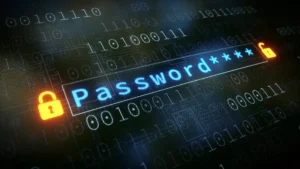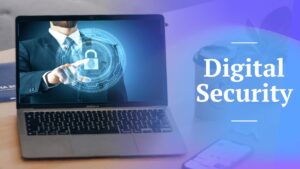Digital security has become an essential part of modern life, as technology plays a crucial role in our daily lives. From smartphones and laptops to smart home devices and online services, almost every electronic device we use stores private or personal information. Digital security is no longer just a concern for large corporations or governments. People who use technology daily face various risks, whether they’re shopping online, using social media, or simply surfing the internet. To protect your personal data and improve your internet security, you need to understand the importance of securing your digital activities.
Understanding the Dangers of Online Use
People who use technology daily don’t always understand all the dangers. Factors that can compromise security include phishing attacks, malware, identity theft, and social engineering. Hackers and cybercriminals often target ordinary people because they assume they don’t take the same security measures as businesses. Connecting to an unsecured Wi-Fi network can compromise private information. The first step in taking smart measures to protect yourself is recognizing that internet risks are real and can happen to anyone.
Creating a Strong Password
Passwords remain one of the most important and fundamental components of digital security. Unfortunately, many people still use weak or duplicate passwords for multiple accounts, making them easy targets for hackers. It’s advisable to create long, complex, and unique passwords that include letters, numbers, and special characters. Using a password manager makes the task easier and keeps your login information secure and organized. For most people, using strong passwords is a beneficial way to protect their accounts from hackers and others who shouldn’t have access.
Staying Safe While Browsing
Our internet usage significantly impacts digital security. Before entering sensitive information, everyday users should make it a habit to check that a website’s connection is secure. The fact is usually indicated by “https” in the browser’s address bar. You can reduce the risk of malware infections by avoiding suspicious links, pop-ups, or downloads. Public Wi-Fi is useful but risky, as hackers can intercept data sent over it. Virtual private networks (VPNs) add encryption to connections and protect your personal data from others. Safe browsing can reduce the chance of common digital risks affecting your online activities.
How to Secure Your Personal Devices
Smartphones, tablets, and computers are essential to our daily lives, making them simple targets for hackers. People who use their devices daily should protect them by enabling screen locks, using biometric authentication where possible, and running reliable antivirus software. Keeping your operating system and apps up to date is crucial, as upgrades often fix known security vulnerabilities. Encryption tools, firewalls, and remote wipe options can make your device more secure if lost or stolen. Treating every device as a treasure trove of valuable personal data and ensuring its appropriate protection is a wise decision.
How to Protect Your Privacy on Social Media
Many people use social media daily, but it can also be dangerous. Users who share too much personal information, such as location, date of birth, or family details, are at risk of identity theft or fraud. People who use technology daily should review and adjust their privacy settings to control who can see their posts and messages. If you only accept friend or contact requests from people you know, you’re less likely to interact with fake or malicious accounts. Another way to stay safe is to be cautious about clicking on links or viewing unknown content. By protecting your privacy on social media, you can make it more secure while still communicating with others.
Backing Up Data Regularly
Data can be lost in many ways, such as through cyberattacks, device malfunctions, or accidental file deletion. People back up critical information regularly every day to ensure its security. Cloud storage services are user-friendly, allowing you to securely store data online and access it from various devices. External hard drives and USB flash drives are examples of offline backups that can provide additional protection. Backups ensure that, even if important data is lost, users can quickly recover and continue using it, preventing serious problems. Integrating backups into your daily routine is a wise step to maintain digital resilience.
Make Security Part of Your Daily Life
Establishing digital security isn’t a one-time event; it’s an ongoing exercise. People who use technology daily should integrate security into their daily lives by regularly checking account settings, changing passwords, and investigating device issues. By performing these small actions regularly, you strengthen your digital shield against cyber threats. Users can secure their data long-term by making digital security a habit, not just an occasional habit. The goal is not only to prevent immediate dangers but also to create a lifestyle that ensures the daily security of information.
Conclusion
With our personal and work lives largely taking place online these days, it’s crucial that everyone who uses technology understands how to protect their data. Every step you take to protect yourself from online risks, such as setting strong passwords, using two-factor authentication, browsing safely, and securing your personal devices, provides an extra layer of protection. Staying informed on social media, keeping your financial information private, and backing up regularly are other ways to improve your security. Ultimately, staying informed and integrating security into your daily life will ensure your long-term online safety. Digital security isn’t difficult; the key is making smart, consistent choices that keep your data safe and give people peace of mind when using technology.
FAQs
1. Why is digital security essential for everyday technology users?
Cybercriminals often target users with weak defenses, making regular users straightforward targets for identity theft, fraud, and financial loss.
2. What’s the best first step to improve your digital security?
The best and easiest first step is to create strong, unique passwords and enable two-factor authentication for all important accounts.
3. How can I protect myself when using public Wi-Fi?
When you use a VPN, your connection is encrypted, making public Wi-Fi more secure and reducing the risk of personal information being exposed.
4. Do I need antivirus software on both my phone and my computer?
Yes, smartphones are just as vulnerable to hackers as computers. Antivirus programs are a crucial tool in protecting me from these threats.
5. How often should I monitor for updates for my devices and apps?
It’s crucial to install updates as soon as they’re available, as they often contain security patches that fix known vulnerabilities.




